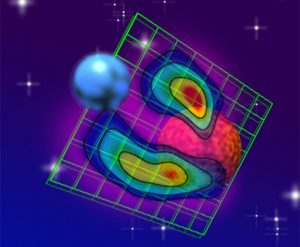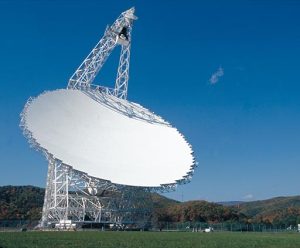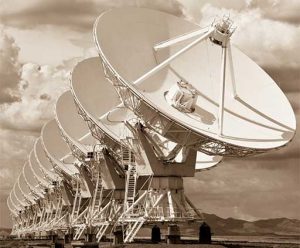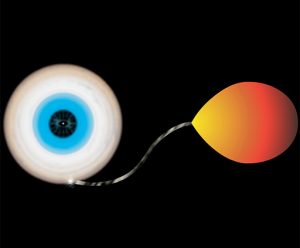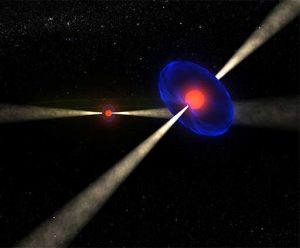Astronomers have found a giant magnetic loop stretched outward from one of the stars making up the famous double-star system Algol. The scientists used an international collection of radio telescopes to discover the feature, which may help explain details of previous observations of the stellar system.
Astronomers Get New Tools for Gravitational-Wave Detection
Teamwork between gamma-ray and radio astronomers has produced a breakthrough in finding natural cosmic tools needed to make the first direct detections of the long-elusive gravitational waves predicted by Albert Einstein nearly a century ago.
Blast from the Past Gives Clues About Early Universe
Astronomers using the National Science Foundation’s Very Large Array radio telescope have gained tantalizing insights into the nature of the most distant object ever observed in the Universe — a gigantic stellar explosion known as a Gamma Ray Burst.
Student Discovers Strange Astronomical Object
A West Virginia high-school student analyzing data from a giant radio telescope has discovered a new astronomical object — a strange type of neutron star called a rotating radio transient.
Missing Link Revealing Fast-Spinning Pulsar Mysteries
Astronomers have discovered a unique double-star system that represents a missing link stage in what they believe is the birth process of the most rapidly-spinning stars in the Universe — millisecond pulsars.
Unique Stellar System Gives Einstein a Thumbs-Up
Taking advantage of a unique cosmic coincidence, astronomers have measured an effect predicted by Albert Einstein’s theory of General Relativity in the extremely strong gravity of a pair of superdense neutron stars.






